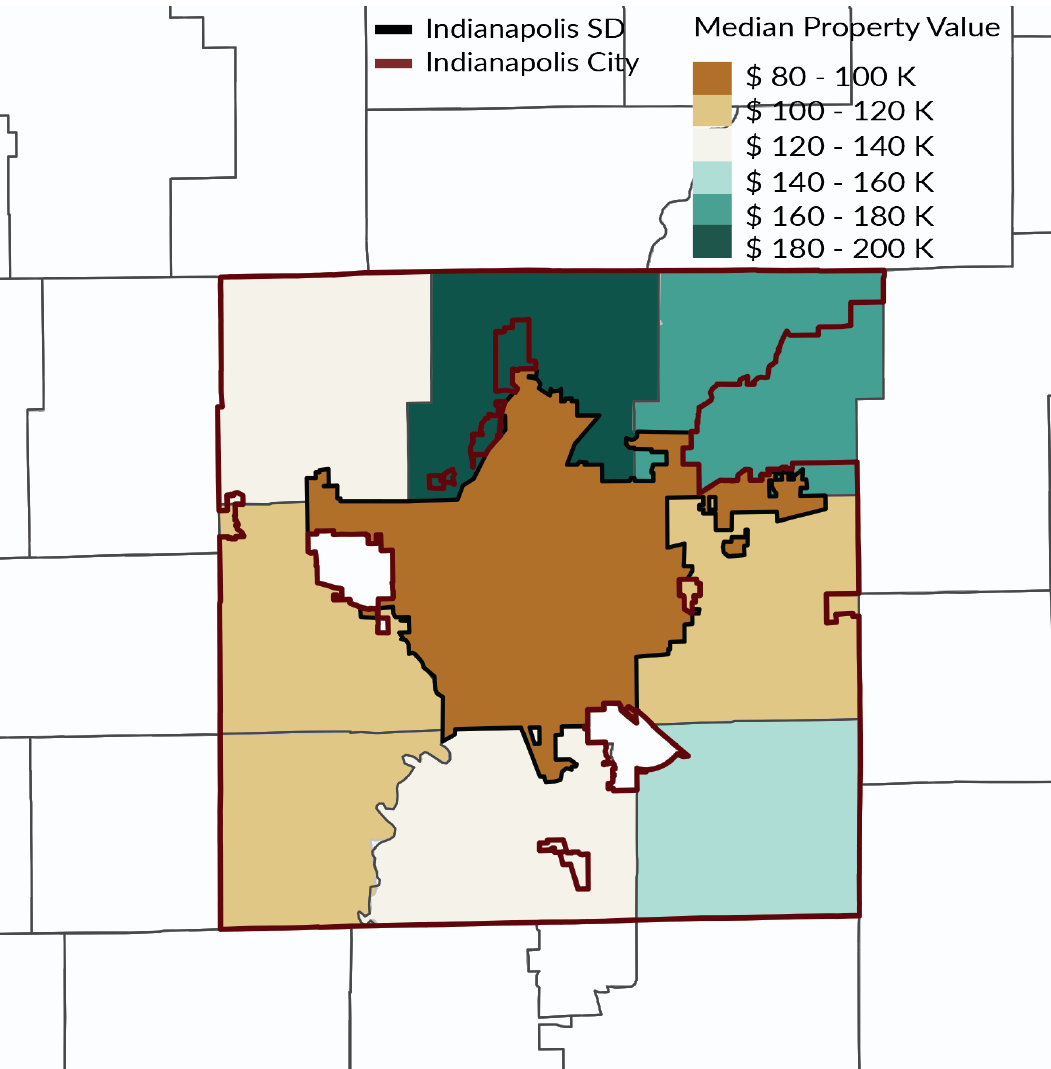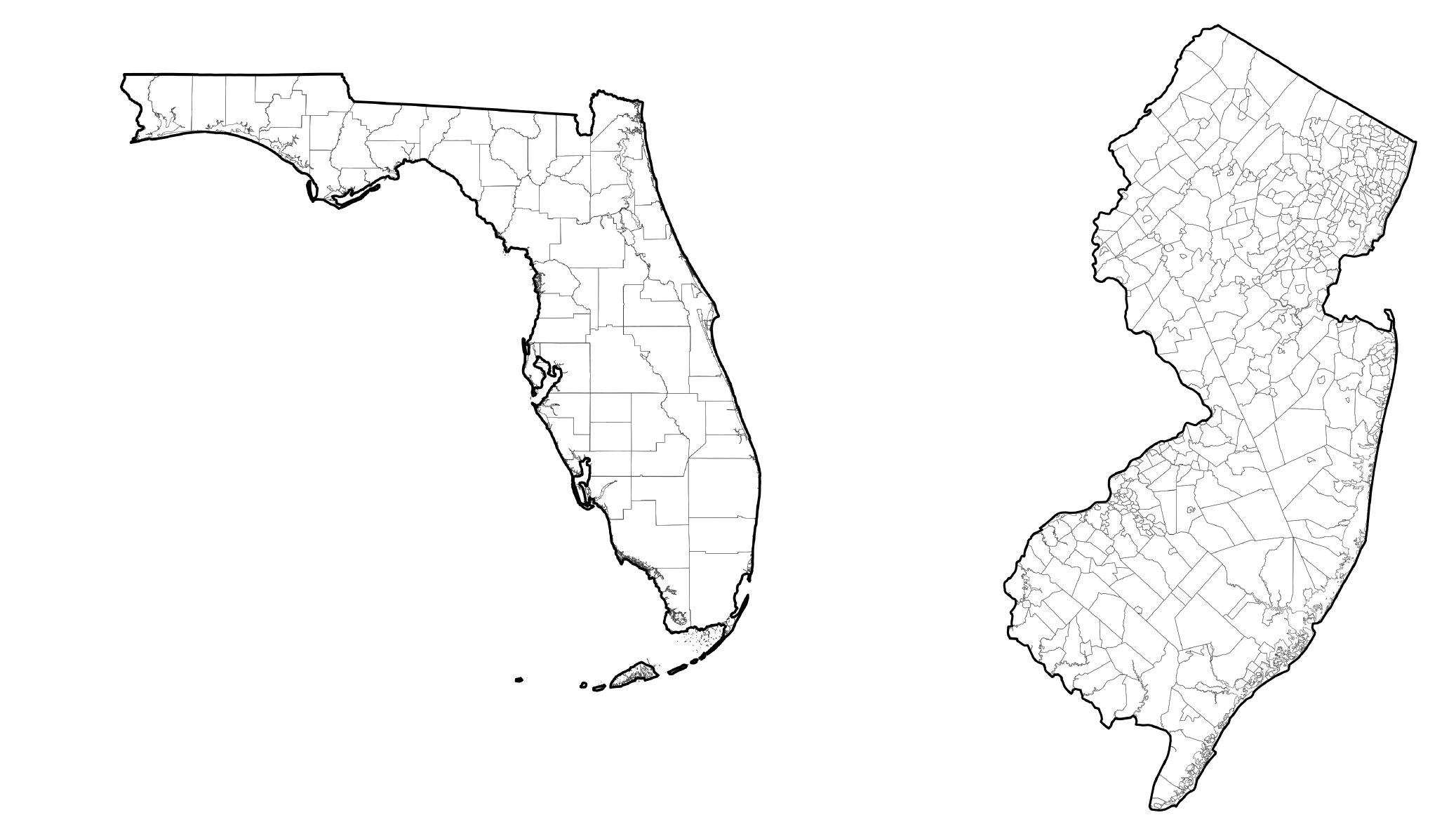The city of Indianapolis once formed the center of Marion County, Indiana. But in 1969, city officials sought to merge the city and county governments in order to grow the city’s tax base and spur economic growth. The plan faced one large hurdle: the city school district. Historically, Indianapolis Public Schools had matched the city boundaries, so a city expansion should have merged IPS with the rest of the county’s school systems. But officials knew from past political fights that including school districts in a consolidation plan would prompt strong objections from the city’s whiter, wealthier suburbs. So they cut a deal: The city would get its expansion, but IPS would have to keep to its current borders, and the suburban school districts would remain untouched. The legislature wrote the bargain into law, allowing these suburbs to have it both ways—reaping the benefits of city life while preserving the advantages conferred by their separate school districts.

When the Indiana legislature allowed this plan, it conceded something that the suburban communities in Marion County already knew: School district borders have power. In almost every state, a substantial portion of districts’ funding is drawn from local property taxes. Under this system, school district borders serve a dual purpose. They define both the student population served by the district and the property tax base that supports it. The border therefore determines which kids have access to what educational resources. That sets off a vicious cycle: Greater property wealth in some districts supports higher school spending; families seek to live within the borders of districts with well-funded schools; and demand for those areas raises home prices, further boosting property tax receipts and school budgets in affluent areas. The result is that our school funding system works to divide communities by wealth, and school district borders entrench those disparities.
Our school funding system works to divide communities by wealth, and school district borders entrench those disparities.
States recognize that a property-tax-driven system will produce unequal funding, and in response, most have tried to compensate with aid formulas that send more state support to districts with lower property values. These policies fall short of actually bringing about funding equity, though, because states rarely do enough to keep high-spending districts from ramping up their local dollars past what the state provides for low-wealth districts. State funding formulas treat the symptoms, but not the disease: The best state efforts will continue to be outweighed by local funding disparities as long as school district borders support much greater funding levels in some districts than in others.
School district borders could be drawn specifically to bring about fairer funding, but no state has taken up this charge. In fact, school district borders are rarely systematically drawn at all. Instead, our school district map is a reflection of the political and economic forces that have shaped states and communities over time. Sometimes, the powers and interests at play affect whole states or regions. For instance, in northeastern states, where town governments have historically held considerable power, most school districts still fall along municipal boundaries, reinforcing that authority. Meanwhile, in the South, where past segregation regimes required school districts to be large enough to encompass separate and unequal black and white school systems, many districts are still drawn broadly, at the county level.

In many cases, though, district borders are the product of narrower circumstances: specific communities seeking to advance their own individual interests. This can take the form of holding onto borders in order to preserve existing advantages, like Indianapolis’ suburbs did in 1969. It can mean wealthy districts merging with each other, consolidating their position while leaving behind lower-wealth school systems, as well-off districts near San Antonio did in the 1950s. Or it can manifest in school district secession, with wealthy enclaves seeking to draw new borders that separate them from larger school systems, as the neighborhood of St. George is on the brink of doing after seven years of trying to pull away from East Baton Rouge Parish, Louisiana. In each of these cases and many others like them, borders are drawn in ways that segregate communities by wealth and divide students from the resources they need.
Divisive borders are incentivized by the school funding system, but they are made possible by the laws that govern school district organization. These policies set the terms by which students are assured access to schools and resources—or are not. For example, a school district’s financial struggles can put its students’ educations at risk, but only eight states have any requirements that newly formed districts have any particular level of fiscal capacity. Relatedly, only two states have requirements concerning the levels of racial or socioeconomic diversity within a district’s borders. That lack matters a great deal in a system where there are often deep divides between districts in terms of both revenue and student demographics and where predominately nonwhite school systems see measurably less school funding. Meanwhile, borders can be changed all too easily to advantage those with power and influence, because there is often no review required by a higher authority when communities pursue on-the-ground changes. School districts mergers only need state approval in thirty-one states. Neighborhoods in five states may secede from their school districts without ever needing state authorization to ensure that the welfare of the students left behind is properly considered. Policies like these allow for district boundaries that serve only the few.
Current laws allow for school district boundaries that serve only the few, without considering the welfare of the students left behind.
It is clear that for many students, school district borders, and the laws that facilitate and entrench them, are the barrier to accessing a well-funded education. Those working to advance educational equity should engage with these laws directly. Community activists can use the processes outlined in border-change statutes to bring about better borders for students in their areas. State policy advocates and lawmakers can work towards revising current laws to bring about policies that require or encourage border-drawing that serves educational opportunity for all students. And the legal community can challenge the laws that stand between students and the meaningful fulfillment of their right to an education. (For further exploration of how each of these groups can incorporate a focus on border laws in their work, see this website’s companion report.)
A full presentation of all states’ border laws can be found below. Using the menu on the left, you can select particular policies to view a map of the states where they apply, or generate a table listing those states and a brief description of their laws. Using the drop-down menus, download a report detailing any states’ border laws, or choose a topic to download a report listing all fifty states’ laws on that subject.
A full accounting of all states’ border laws can be found below. Using the drop-down menus, download a report detailing any state’s border laws, or choose a topic to download a report listing all fifty states’ laws on the subject. To view this information in map or table form using an interactive web tool, visit Frontier on a device with a larger screen.